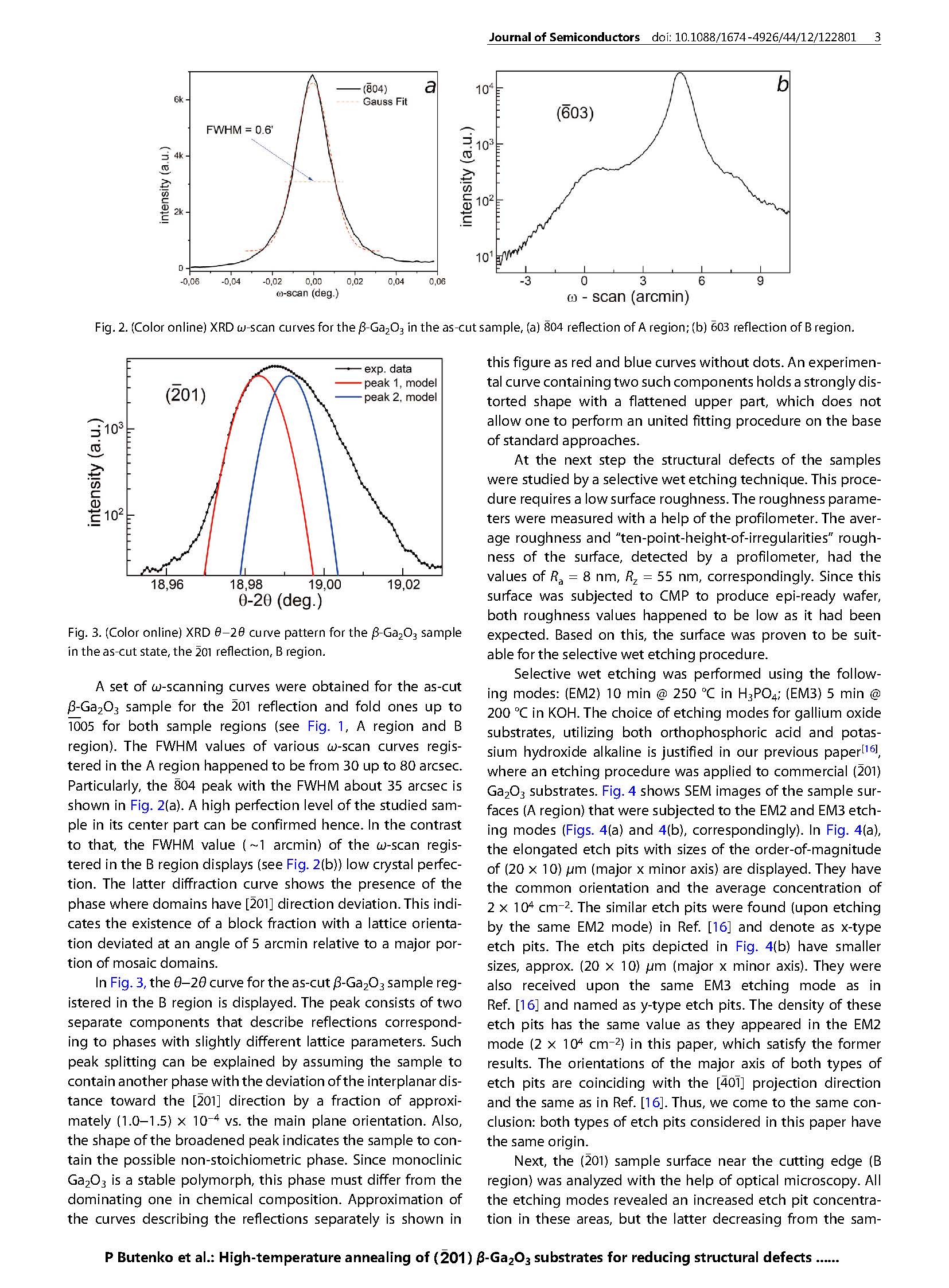
【International Papers】High-temperature Annealing of (-201) β-Ga₂O₃ Substrates for Reducing Structural Defects After Diamond Sawing
日期:2024-02-23阅读:557
Researchers from the Ioffe Institute and the Tomsk State University have published a dissertation titled "High-temperature annealing of (-201) β-Ga2O3 substrates for reducing structural defects after diamond sawing " in Journal of Semiconductors.
Abstract
A commercial epi-ready (-201) β-Ga2O3 wafer was investigated upon diamond sawing into pieces measuring 2.5 × 3 mm2. The defect structure and crystallinity in the cut samples has been studied by X-ray diffraction and a selective wet etching technique. The density of defects was estimated from the average value of etch pits calculated, including near-edge regions, and was obtained close to 109 cm−2. Blocks with lattice orientation deviated by angles of 1−3 arcmin, as well as non-stoichiometric fractions with a relative strain about (1.0−1.5) × 10−4 in the [-201] direction, were found. Crystal perfection was shown to decrease significantly towards the cutting lines of the samples. To reduce the number of structural defects and increase the crystal perfection of the samples via increasing defect motion mobility, the thermal annealing was employed. Polygonization and formation of a mosaic structure coupled with dislocation wall appearance upon 3 h of annealing at 1100 °C was observed. The fractions characterized by non-stoichiometry phases and the block deviation disappeared. The annealing for 11 h improved the homogeneity and perfection in the crystals. The average density of the etch pits dropped down significantly to 8 × 106 cm−2.

Fig. 1. The scheme of the lattice crystallographic basis in the β-Ga2O3 crystal sample. “A region” is the central region with a high level of crystal perfection; “B region” is the edge region with a lower crystal perfection.
Paper Link:http://www.jos.ac.cn/en/article/doi/10.1088/1674-4926/44/12/122801










